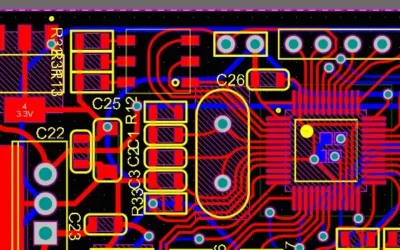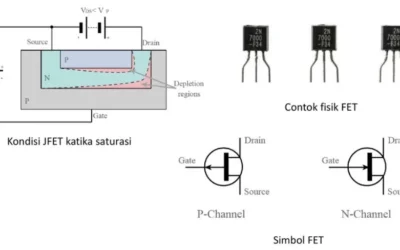Back to blog
Diving into Ceramic PCBs: Types and Material Characteristics

Diving into Ceramic PCBs
Ceramic PCBs, also known as ceramic hybrid circuit devices, have become the industry standard for electrical components. Initially used in ceramic capacitors, this technology is now employed in various applications due to the properties of ceramic materials, making them durable, reliable, and an excellent alternative to traditional electrical components. This article explores the materials, types, benefits, and drawbacks of ceramic PCBs, providing insights into their production and sourcing.
What is a Ceramic PCB?
A ceramic printed circuit board is a type of PCB made of a ceramic material base or substrate, usually an inorganic dielectric, instead of the traditional fiberglass or epoxy resin base. It consists of a thin insulating layer of ceramic material with a metal component.
Basic Components of Ceramic PCBs
Integrated circuits have become highly integrated, with modern technology and electronics containing hundreds or thousands of transistors and resistors in a complex assembly built on a small silicon chip or integrated circuit (IC). These integrated circuits require a base or substrate where tiny electronic materials and connections are built, along with a structure that isolates the circuit from its external surroundings, turning it into a compact and solid unit known as a package. Substrates and packages are essential for maintaining the reliability of integrated circuits, providing insulation and protection.
Ceramic materials are known for their insulating properties, making them ideal for substrates and packages in integrated circuits. Their excellent heat conductivity and gas tightness performance make them suitable for applications in power electronics, hybrid microelectronics, electronics packaging, and multi-chip modules, particularly in industries such as aerospace and automotive that require high-power-density circuit designs in harsh environments. Ceramic PCB substrate materials are used in high-temperature applications where regular PCBs cannot withstand the temperatures.
Materials Used in Ceramic PCBs
Various ceramic materials are used to make ceramic PCBs, with thermal conductivity and coefficient of thermal expansion (CTE) being critical characteristics to consider. Examples of substrate materials include alumina or aluminum oxide (Al₂O₃), aluminum nitride (AlN), beryllia or beryllium oxide (BeO), silicon carbide (SiC), and boron nitride (BN).
Aluminum Oxide (Al₂O₃)
Aluminum oxide, also known as alumina, is an inorganic compound made of aluminum and oxygen. It is an excellent electrical insulator with a high electrical resistivity of approximately 1 × 1014 Ω·cm. With outstanding thermal and corrosion stability, mechanical and dielectric strength, and the ability to create airtight seals, alumina is commonly used in electronics for substrates and packages, offering a thermal conductivity of 25.0 W/(m·K) and a CTE of 4.5 to 10.9 x 10-6/K.
Aluminum Nitride (AlN)
Aluminum nitride is a non-oxide, semiconductor technical-grade ceramic material with an electrical resistivity of 10 to 12 10x Ω-m and a thermal conductivity of 80 to 200 W/(m·K). It has a low coefficient of thermal expansion (CTE) of 4 to 6×10-6K1, making it suitable for high-current and high-temperature environments.
Beryllium Oxide (BeO)
Beryllium oxide, or beryllia, is derived from beryl or the mineral bromellite. It has a high thermal conductivity of 209 to 330 W/(m·K) and a CTE of 7.4 to 8.9 x 10-6/K, making it ideal for applications requiring air or liquid cooling in high-temperature or high-density PCBs.
Advantages and Disadvantages of Ceramic PCBs
Benefits of Ceramic PCBs
Ceramic PCBs offer several advantages over traditional PCBs, including:
- High Thermal Conductivity: Ranging from 25 to 330 W/(m·K), ceramic PCBs dissipate heat efficiently, preventing damage from high temperatures.
- Low Coefficient of Thermal Expansion (CTE): With solid interatomic bonds, ceramic PCBs remain stable and steady even under changing temperatures.
- Excellent Thermal Insulation: Heat is less likely to flow through the substrate, protecting components from damage.
- Inorganic Material: Ceramic PCBs offer long-term chemical resistance and durability.
- Multi-Layering: Allows for complex tasks and heavy-duty applications.
- High Frequency Capability: Ideal for applications requiring high-frequency data and electrical signal transmissions.
- Cost Efficiency: Despite initial costs, ceramic PCBs offer improved performance and longer service life, reducing overall system costs compared to metal core PCBs.
Drawbacks of Ceramic PCBs
While ceramic PCBs offer numerous advantages, there are some potential drawbacks to consider:
- Handling: Ceramic PCBs can be delicate and require special handling during assembly and testing.
- Affordability: While cost-effective in the long run, ceramic PCBs are initially more expensive than traditional PCBs due to special production equipment and materials.

Types of Ceramic PCBs
Ceramic PCBs are manufactured using various processes, resulting in different types based on their production methods. Common types include:
- Laser Activation Metallization PCB (LAM PCB): Utilizes a high-energy laser drill to ionize the ceramic substance and metal, creating a bond or deep link for a smoother surface texture.
- Direct Plate Copper PCB (DPC PCB): Uses a physical vapor deposition (PVD) method to bond copper to substrates at high temperatures and pressures, with a copper thickness range of 10 μm to 140 μm.
- Direct Bonded Copper PCB (DBC PCB): Introduces oxygen between copper and ceramic before or during deposition, suitable for high copper thicknesses of 140 μm to 350 μm.
- Low-Temperature Co-fired Ceramic PCB (LTCC PCB): Combines ceramic substance with glass material to create PCBs with excellent thermal and electrical properties.
- High-Temperature Co-fired Ceramic PCB (HTCC PCB): Manufactured using raw ceramic substrate material without adding glass, baked at temperatures of 1600–1700 °C for use in harsh environments.
- Thick Film Ceramic PCB: Baked at high temperatures in a nitrogen atmosphere after coating the ceramic base with dielectric, gold, silver, or copper, suitable for oxidation-sensitive applications.
When to Use Ceramic PCBs
Ceramic PCBs are ideal for applications requiring high heat resistance, durability, and reliability. They are suitable for use in harsh environments, high-power-density circuit designs, and high-temperature applications where traditional PCBs may not withstand the conditions. Consider the cost, weight, and thermal conductivity requirements of your project when deciding whether ceramic PCBs are the right choice.
The excellent thermal conductivity of ceramic PCBs makes them well-suited for applications where heat dissipation is critical. Additionally, their high mechanical strength and resistance to chemicals and corrosion make them suitable for use in demanding environments. However, ceramic PCBs tend to be more expensive and heavier than traditional PCBs, so it’s essential to weigh these factors against the benefits they offer for your specific application.
Where to Find Ceramic PCBs
Ceramic PCBs are available from a variety of sources, both online and offline. Companies like Highleap Electronic offer custom ceramic PCB manufacturing services, allowing customers to tailor their orders to specific requirements. Local electronics stores may also carry ceramic PCBs, although the selection may be limited. Online retailers such as AliExpress and Alibaba often have a wide range of ceramic PCBs available for purchase.
When sourcing ceramic PCBs, it is crucial to conduct due diligence to ensure that you are dealing with a reputable supplier. Factors to consider include the supplier’s track record, the quality of their products, and their ability to meet your specific requirements. Additionally, consider factors such as order size, material type, and shipping costs when making your decision. By carefully evaluating these factors, you can find a reliable supplier for your ceramic PCB needs.
Conclusion
Ceramic PCBs have become the industry standard for electrical components due to their durability, reliability, and superior performance compared to traditional PCBs. Understanding the materials, types, benefits, and drawbacks of ceramic PCBs can help you make informed decisions about their use in your projects. Whether you are looking for high heat resistance, thermal conductivity, or durability, ceramic PCBs offer a viable solution for various applications in the electronics industry.
PCB & PCBA Quick Quote
Related Articles
Analysis of Power Supply Noise in HF PCB Design Process
This comprehensive guide explores the complexities of power supply noise, its origins, and advanced techniques to mitigate its effects in high-frequency PCB designs.
What is EMI, EMS and EMC?
At Highleap Electronic, we specialize in producing high-quality PCBs by integrating advanced techniques for impedance control, ensuring robust EMC and mitigating EMI.
Understanding Field-Effect Transistors (FETs) in PCB Design
Dive into the fundamentals of Field-Effect Transistors (FETs) and their critical role in PCB design.



